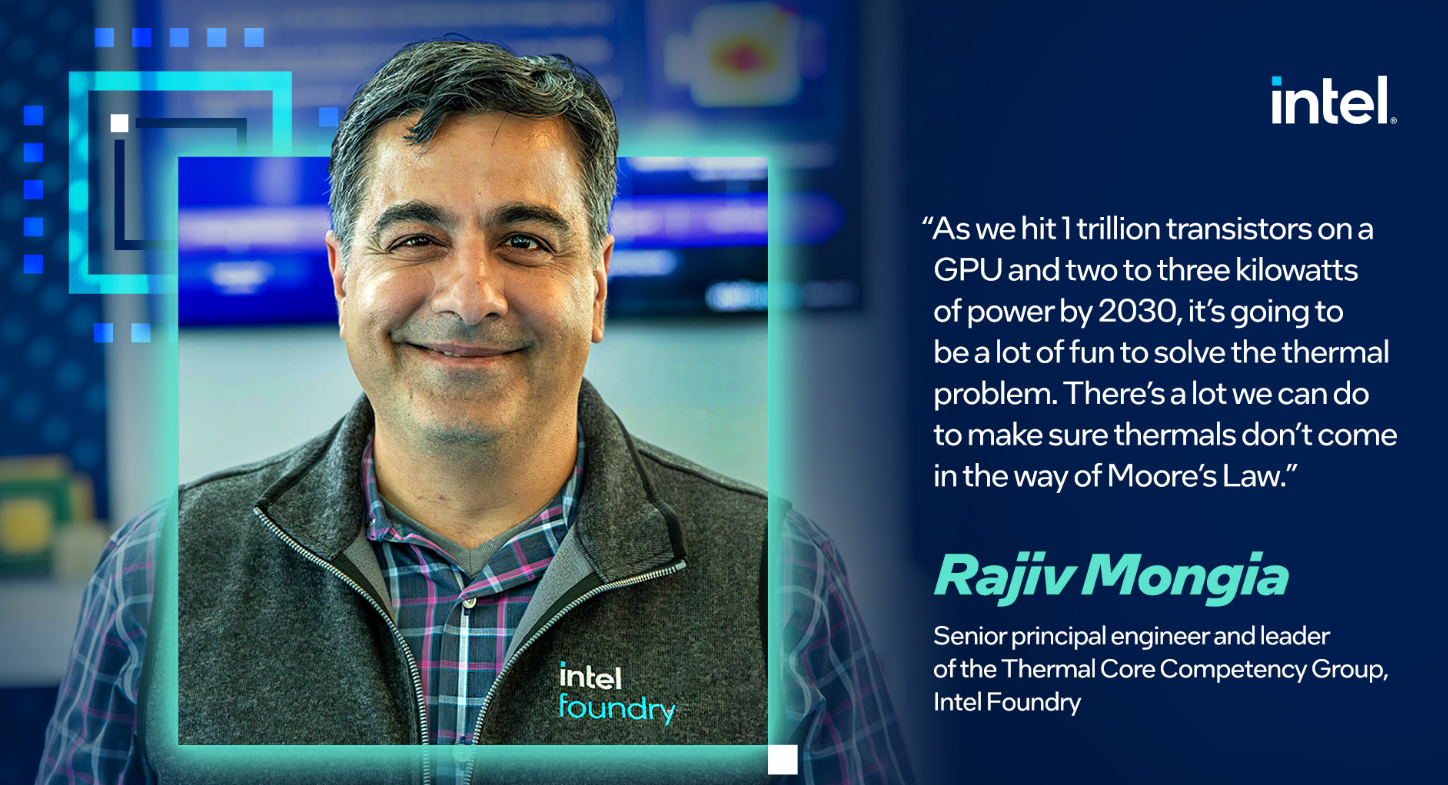Cooling the Future: How Intel Is Tackling AI’s Heat Challenge

According to a recent report by the International Energy Agency, AI could more than double the energy consumption of data centers by 2030, reaching approximately 945 terawatt-hours annually. That’s equivalent to building five new Three Gorges Dams just to meet demand in the next five years.
This explosion in power consumption is not just to run high-performance computers—it’s also to cool them. Modern AI data centers are packed with GPUs and accelerators, each generating over 1 kilowatt of heat. To put that into perspective, that’s about the same power draw as a space heater, microwave, or hairdryer.
With performance and transistor density rapidly increasing, AI chips are becoming both hotter and more compact. “By 2030, we expect GPUs to have up to a trillion transistors and consume 2 to 3 kilowatts of power,” said Rajeev Mongia of Intel. “Managing that heat is going to be a fascinating challenge.”
Cooling Chips to Unlock AI’s Potential
Rajeev Mongia, a Senior Principal Engineer at Intel and head of the thermal capabilities group within the Assembly and Test Technology Development (ATTD) division, believes innovative cooling solutions hold the key. His job is to make sure thermal challenges don’t become roadblocks to Moore’s Law.
Mongia’s team is tasked with developing new ways to manage heat across increasingly complex chip packages used by Intel and its foundry customers. Before joining Intel, Mongia worked on micro gas turbines and as a failure analyst, even studying the collapse of the World Trade Center towers in 2001. “I decided I wanted to build instead of investigate destruction,” he recalled. His early work at Intel included making laptops more comfortable to use.
Over his 22-year career, Mongia has been involved in nearly every major thermal initiative at Intel—from RealSense cameras to maker-focused platforms. “It might sound like an odd transition, but thermodynamics, fluid dynamics, and heat transfer are still the same sciences, whether you’re dealing with burning buildings or boiling chips.”
What drives him is the challenge: “Understanding airflow is easy now. What matters to me is solving interesting problems and making a difference.”
Next-Gen Thermal Engineering for Next-Gen AI Chips
As multi-chip packaging and AI applications explode, so do the thermal demands. Mongia explained that new strategies are required, starting with integrating thermal planning early in chip design. His team now runs nearly 100,000 thermal simulations a month as part of a collaborative design process.
They’ve created industry-standard models for stacked High Bandwidth Memory (HBM) thermals and are now applying those techniques across diverse multi-die architectures. Accurate thermal modeling is essential when you’re stacking high-power chips in confined spaces.
In one instance, Mongia’s team helped redesign a heat-sensitive customer chip. After early tests showed thermal issues, the team modeled hundreds of variations and overhauled the chip’s layout and IP distribution within two weeks—delivering a design that exceeded performance targets.
“Everything from the silicon to the system is interconnected,” he emphasized. “Sometimes, counterintuitively, increasing a component’s power can actually make it easier to cool.”
Cool Solutions: From Liquid Cold Plates to Embedded Fluids
Beyond modeling, Mongia’s team is pushing physical cooling innovations. One key development is the “integrated cold plate”—a micro heat exchanger replacing traditional heat spreaders, featuring dozens of micro-fins with coolant flowing directly across them.
Early results are promising: Large GPUs using integrated cold plates operate 20% cooler, enabling up to 15% faster performance. These breakthroughs are already gaining traction with potential foundry clients.
But Mongia’s team isn’t stopping there. “It gets more exotic,” he said. They’re exploring ways to move cooling liquids inside the silicon stack itself. Imagine liquid circulating not just around the chip but through its very core—a radical approach to managing heat at the most advanced levels.
